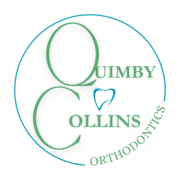FAQ
1. Why should you choose an orthodontic specialist?
2. Will I need to have teeth extracted for braces?
There is no hard and fast rule regarding extracting teeth for orthodontic treatment. The orthodontist evaluates the individual patient and their particular treatment needs to determine whether extractions are necessary. Straight teeth and a balanced facial profile are the goal of orthodontics; removing teeth may not be necessary to achieve this goal.
3. What is early treatment? (interceptive/growth modification)
Interceptive or growth modification treatment is also sometimes called “early treatment” as it is initiated on children between the ages of 7 and 10 and may last about 6-15 months. The period following early treatment is called the holding period during which growth and tooth eruption are closely monitored. Throughout this period, parents and patients will be kept informed of future treatment.
4. Will my child need a palate expander or splitter?
Palate expanders are used to correct crossbites and create space for crowded teeth. The orthodontist will determine if this will be part of your child’s treatment after the initial examination is completed.
5. Is it too late to have braces if I am already an adult?
No patient is “too old” to wear braces. In fact 25% of our practice consists of adult patients. Straight teeth, a healthy bite and improved self-image are important at every age and are especially critical as we age. Correcting orthodontic issues contributes to improved lifelong dental health. Options like Invisalign® or clear braces give adults alternatives to traditional braces
6. When are appointments available?
We understand that today’s families juggle busy schedules and may also find it difficult to miss school or work for appointments. We do our best to accommodate your schedule by offering early morning and evening hours during the week. We recommend scheduling appointments well in advance so you can plan accordingly.
7. Can I drop my child off for appointments?
Like any medical appointment, it is important that you are present to discuss your child’s appointment, progress and next steps with the treatment. There are a few lengthy appointments such as banding and debanding when it may be feasible to leave your child during treatment once you have talked with the doctor.
8. How much will braces cost? Are financing options available? How does orthodontic insurance work?
The expense of braces depends on the individual treatment plan. We offer several financial options, including no-interest financing. We also accept MasterCard, Visa, Discover and American Express. All options will be thoroughly explained by our financial coordinator who also can help identify any orthodontic benefit your insurance may include. Orthodontic insurance differs from dental insurance and is plan specific.
9. Do I still see my regular dentist during orthodontic treatment?
Yes! Regular checkups with your family dentist are important while in braces. Both your family dentist and your orthodontist will determine the intervals between cleaning appointments while you are in braces. At a minimum you should see your dentist twice a year.
10. I have heard of Damon brackets? What are they?
Damon brackets are a “brand” of self-ligating or “frictionless” brackets which use a slide mechanism to hold wires in place versus a metal or colored tie.
Brackets function to help move the teeth in a desired location. Categories of brackets include but are not limited to: 3D printed brackets (such as LightForce), Damon brackets, Wildsmiles, and GC brackets.
Regardless of the bracket (brand system) chosen by your orthodontist, research has shown that excellent treatment results are obtained by all systems with the difference in duration dependent on the doctor and patient compliance. The doctors will help you select a system that best fits your esthetic and functional needs.
11. Can I get Invisalign instead of regular braces?
Invisalign® treatment consists of a series of aligners that you switch out about every two weeks. Each aligner is individually manufactured with anticipated tooth movement to gradually shift your teeth into place. Invisalign is a technology popular among high school teens and adults. Your orthodontist will determine whether it is appropriate for you.
12. What is the difference between a repair appointment and an emergency appointment?
Sometimes during treatment, minor occurrences such as a bracket becoming unglued, a wire bending or breaking or a band loosening may require you to come in for a repair appointment. Call our office to see if this can wait until your next visit or if a repair appointment needs to be scheduled.
If there is a true medical emergency, call 911 immediately. If trauma is localized to the teeth and braces, an emergency appointment should be scheduled so the orthodontist can evaluate the trauma. Emergency appointments always take precedence over regular appointments and may cause an increase in wait time. Your patience is appreciated should an emergency appointment impact your wait time.
Our goal is help educate you and provide you with a truly incredible, beautiful smile!
